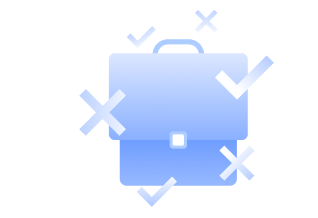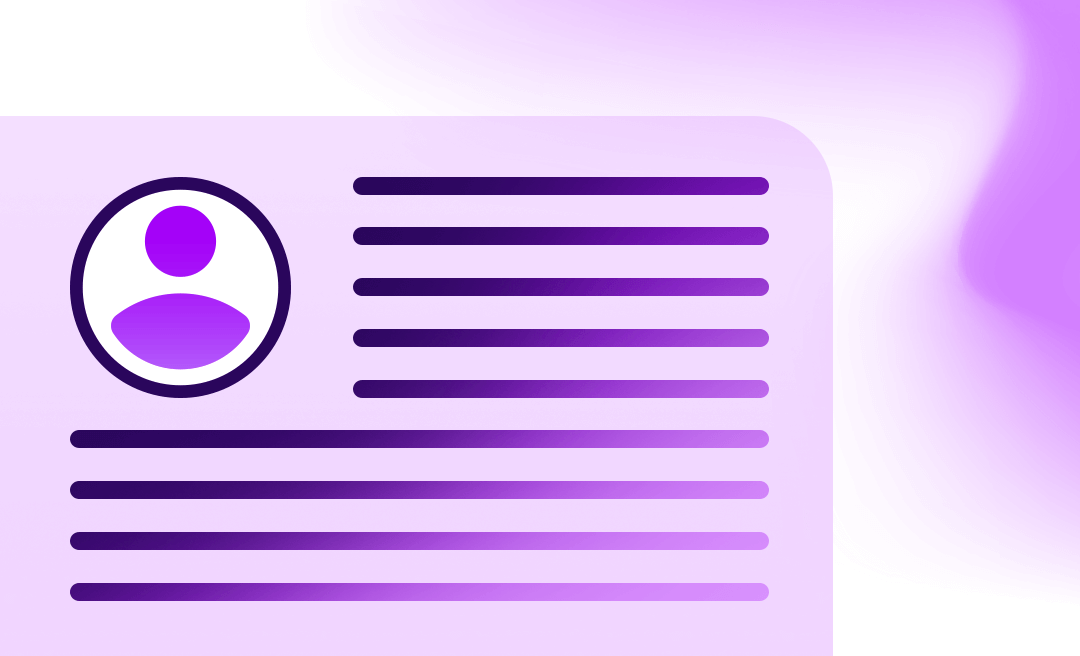AI’s greatest power lies in amplifying human potential
Together with FR Media, we’re continuing our series of inspiring stories from tech experts about their journey into AI. Maksim Khramchankou, Senior Business Analyst at EPAM, reflects on his AI journey — from breakthrough moments to driving innovation through ethical, creative, and human-centered approaches. By sharing his insights, Maksim emphasizes how AI can transform our work and lives, blending human emotional intelligence with technological advancements.
.webp)
“AI works best as an augmentation of human expertise”
— I’m currently a Senior Business Analyst, but in practice, I contribute as a Product Manager for BadgerDoc, EPAM’s AI accelerator specializing in intelligent document processing. In this role, I define the vision and roadmap for a platform that enables users to automate the extraction and structuring of data from a wide range of documents. BadgerDoc is built with a human-in-the-loop interface, combining AI capabilities with human oversight — a design philosophy that has deeply shaped how I think about AI. I believe AI works best not as a black-box replacement, but as an augmentation of human expertise.
What really influenced my thinking about AI is the breadth of experiences and mentors I’ve had at EPAM. I started in business analysis roles, working with cross-functional teams and clients across North America and Europe. This exposed me to many domains — life sciences, supply chain, healthcare, and more — and I saw common patterns in how technology could solve problems.
About five years ago, I shifted my focus to applied AI in real products. Along the way, I was fortunate to have mentors in EPAM’s AI community and opportunities to mentor others through bootcamps and courses. These experiences taught me that bridging technical innovation with human needs is key. Every side project or challenge I tackled showed me a new facet of AI, from the importance of data quality to the ethics of AI decisions. These moments collectively shaped my values: curiosity, practicality, and human-centric AI development. These experiences have shaped a clear perspective: AI should be approached with a mix of curiosity, practical realism, and a focus on human-centric outcomes.
“That ‘aha’ moment completely changed the way I thought about software”
— My journey into AI was sparked by a project around five years ago, where I helped build an AI-powered chatbot for a workforce management platform. This was my first hands-on experience implementing an AI solution. We used Google’s Dialogflow for natural language understanding and integrated it with Google’s Document AI platform to allow the bot to fetch answers from documents. I vividly remember the first time the chatbot successfully handled a full end-to-end conversation — it could understand a question about workforce policies and instantly retrieve the relevant information from a document. That moment completely changed the way I thought about software: we could move from static, pre-programmed responses to something more intelligent.
That moment changed everything for me. I became hooked on AI. From there, I sought out more opportunities to work on AI-driven solutions — from verifying pharmaceutical promotional materials with machine learning to using computer vision and natural language processing (NLP) for document analysis. Each project deepened my curiosity. I started reading voraciously, experimenting with side projects, and contributing to open-source AI tools.
That one chatbot project ignited a whole new trajectory in my career.
It’s what ultimately led me to my current role, where I get to work with AI every day. The moment I saw an AI system truly understand a user’s request and deliver a meaningful answer, I knew this was the field I wanted to dedicate my career to.
“AI flagged a subtle inconsistency that even human reviewers missed”
— One of my biggest “wow” moments was during a project in the life sciences domain. We had developed a tool to help review pharmaceutical promotional materials for accuracy and compliance. During one demonstration, the AI flagged a subtle inconsistency in a medical claim within a document. It required cross-referencing a detail buried in a lengthy reference document — something even the human reviewers had overlooked. The domain experts double-checked and realized the AI was correct. That was a powerful moment. It showed how AI can augment human expertise and catch things that might slip through manual review.
Another standout moment for me has been the evolution of BadgerDoc itself. Originally, we started it as an R&D idea to build a generic document processing platform with human-in-the-loop oversight. Over time, it grew into a powerful accelerator equipped with data pipelines, OCR and NLP models, and an intuitive UI for humans to correct or validate AI outputs. We open-sourced it and designed it to deploy flexibly anywhere. A major milestone was running BadgerDoc on thousands of mixed PDF pages—tables, forms, and complex text documents—and watching as it processed and extracted structured data within just a few hours. What typically took teams weeks to tackle manually was now completed in a fraction of the time, with the AI doing the heavy lifting and humans only reviewing exceptions.
It’s one thing to prototype an AI solution in the lab, but it’s an entirely different feeling to see it in action, delivering real-world impact—whether it’s catching a single critical inconsistency or achieving massive efficiency gains in document analysis. Seeing AI in action, making someone’s job easier, is what keeps me inspired.
“Emotional intelligence and empathy will matter more than ever”
— As AI takes over more routine and analytical tasks, human skills become even more crucial. I believe emotional intelligence and empathy will matter more than ever. AI can crunch data and simulate conversations, but it doesn’t truly understand human feelings or context. The ability to connect with people, understand their needs, fears, and motivations — that’s a uniquely human strength that will differentiate us in an AI-enhanced workplace.
Communication is another key skill. As we work with AI systems, being able to articulate problems and explain AI-driven insights to others — especially non-technical stakeholders — is huge. People who can bridge that gap will be incredibly valuable.
Ethical judgment and critical thinking also skyrocket in importance. AI will present us with recommendations or even decisions, but humans must oversee those with a moral and logical compass. We need people who can ask, “Does this outcome make sense? Is it fair? What are the implications?”
“AI should be an invisible collaborator — a digital co-worker for every employee”
— I have a very optimistic view of how AI will shape the future of work. I hope to see AI become an invisible collaborator in our daily jobs — almost like a digital co-worker or assistant for every employee. In practical terms, that means AI would handle tedious tasks like data analysis, drafting reports, and automating routine workflows. This would free people to focus on what we find most meaningful — strategy, collaboration, and innovation.
I envision a workplace where human-machine collaboration is seamless. You might brainstorm ideas with your team and an AI tool simultaneously, or get real-time insights from AI during meetings. Productivity could be redefined to emphasize well-being and the creation of new knowledge. Imagine every professional equipped with an AI-powered co-pilot that can instantly answer questions or take on routine tasks. The human remains the decision-maker and creative driver, while AI enhances their speed and access to information.
Ultimately, I hope for a future where AI is everywhere, but always used for good— integrated into the fabric of society in a way that enhances human potential. We have to be mindful and intentional in how we build towards that future, but if we get it right, AI has the power to make work more fulfilling, daily life more convenient, and creativity more accessible.
I’m both a dreamer and a pragmatist. I recognize that AI won’t solve all our problems and will inevitably introduce new challenges. Still, I’m excited by the vision of it being a powerful tool that, in partnership with humanity, shapes a better tomorrow.
“Keep learning, leverage AI, and double-down on being human”
— My biggest piece of advice is that learning must be a continuous process. The AI field moves fast, and the skill set required in many jobs is evolving. The World Economic Forum projects that “the skills needed for work are expected to change by 70% by 2030” — that’s how dramatic the shift could be. But rather than let that intimidate you, see it as motivation to keep upskilling. You don’t have to become a hardcore AI researcher, but do stay curious and keep adding to your toolkit. Keep learning, leverage AI to your advantage, and double-down on being human. This combination will not only keep you relevant — it will help you thrive with confidence in the AI-powered workplace.
“Resources that helped me grow”
— There’s a wealth of great AI resources out there. Here are a few that I often recommend:
- Andrew Ng’s Machine Learning on Coursera provides a solid foundation in machine learning algorithms and concepts. Andrew Ng is a fantastic teacher who makes complex topics approachable.
- AI Superpowers by Kai-Fu Lee is a book that delivers an insightful look into the global AI landscape and how AI might affect the future of work.
- Lex Fridman Podcast , particularly the AI-focused episodes, offer deep and informative conversations with leading AI researchers and thinkers.
- The Hugging Face community and resources are ideal for anyone interested in NLP and the latest in AI models. Their beginner-friendly forums and documentation, along with their highly accessible online course on transformers, make it easy to learn. You can also use pre-trained models available on their hub. It’s a great way to get hands-on with state-of-the-art AI without needing a huge infrastructure.
“I have a few routines and tools that keep me focused and creative in such a fast-moving field”
Dedicated “deep work” time
I block off time when I turn off notifications and focus on a challenging task or learning something new. I often use the Pomodoro technique (25-minute focused sprints) to maintain intensity.
Mind mapping and whiteboards
When I need to be creative, I step away from the keyboard. Sketching on a whiteboard or using mind-map tools helps me see problems in a non-linear format and sparks new connections. Similarly, sometimes I’ll write out ideas in a notebook with no specific goal, just to let thoughts flow. This helps me when I’m stuck or need a fresh perspective.
Stepping away to recharge
Taking breaks is crucial. I make sure to clear my head with a walk, stretching, or coffee. I also have hobbies outside of work — hiking and mountaineering — that I engage in regularly.


_(1).png)
.png)